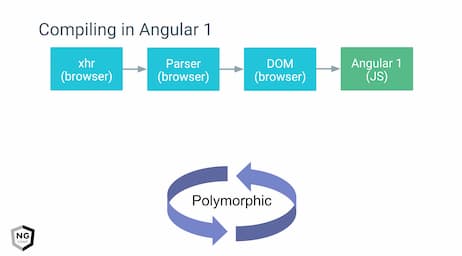
Takeaways from ng-conf 2016
I know it has already been three weeks since ng-conf but I wanted to highlight my takeaways from the conference. This was the first technical conference I had ever attended so almost everything was a new experience for me. The only exposure I had to the format was through YouTube videos of talks from ng-conf 2015 and AngularConnect but attending in person was entirely different.
#ngconf 2016 pic.twitter.com/mTs6frxVlj
— ng-conf (@ngconf) May 11, 2016
The three day conference included keynote announcements from the Angular team, plenty of talks and a “Fair Day” which included games, talks, workshops, and smaller settings such as the “Ask Me Anything” sessions. Even above the talks, I personally enjoyed the opportunity to join in on discussions on what the Angular community was doing. Going into the conference, I was one of only a handful of developers in my department using Angular so in many ways I had been blazing my own trails. After those three days, I had a much broader exposure to what the community was doing and where Angular is heading. Here are the things that stood out the most to me.
Angular is being used in production
One thing that Brad Green emphasized in his keynote was that Angular 2 is already being used in production. The Weather Channel, Lucid Chart, and Capital One all spoke about how Angular 2 has already been integrated into their websites. Brad also announced that Angular 2 was now in release candidate, signaling that the API is narrowing in on its final form.
From #ngConf, Angular 2 is already used in production including Google AdWords, Capital One and the Weather Channel.
— Rachid Al Khayat 🍕 (@rakhayyat) May 7, 2016
Angular is multi-platform
Chef @jenlooper and chef @tjvantoll are cooking up cross platform @nativescript apps at #ngconf — @ruslanml
While projects like Ionic allowed using Angular 1 in platforms beyond desktop browsers, it remained primarily a web thing. With the architecture and speed of Angular 2, many more options are available. Ionic 2, NativeScript, and React Native all can leverage Angular for mobile experiences. The Angular team itself showed off an Angular progressive web app for a rich web experience on mobile. Further, Angular universal is leveraging Angular server-side to pre-render applications before serving them to the client. With all these options, the possibilities seem endless for Angular 2.
TypeScript is being embraced by the JavaScript community
As a new-grad hire who only worked with JavaScript minimally before starting a project with TypeScript, I honestly have had more experience with TypeScript than with plain ES5. The tooling help TypeScript enables is not to be discounted and at ng-conf there were many speakers who encouraged more TypeScript adoption. This was great to see as user of the language and I hope it leads to better integration with other build tools.
Yes yes yes!
— Justin Schwartzenberger (@schwarty) May 6, 2016
"This is #TypeScript" - @scotups
Let the people know! #ngconf pic.twitter.com/CQzeJJUAay
You will want to use the offline template compiler
In Angular 1 templates were retrieved and interpreted in the browser. Angular 2 will have the option of handling this step during the build process. This removes a significant chunk of the framework from the browser payload. This also means that templates will be converted to the base Angular instructions which browsers will be able to run much more optimally than the complex functions Angular 1 templates produced.
The Angular CLI will be the goto way to build Angular apps
I didn’t understand the value of the angular-cli project going into the conference, but it was probably the biggest takeaway I had. The CLI will set up your build process. Generate components, services, and routes. It includes style guide suggestions. It may even one day automate version upgrades. While the project still has a ways to go, Mike Brocchi’s talk showed the power it contains. In my mind, this it the anecdote to the biggest headache in Angular 2, which is the build process management but also the future for the majority of Angular 2 development.
Honestly, IMHO, angular-cli is the single most important feature to helping people adopt Angular 2 @ngconf #ngconf
— Hannah Howard (@techgirlwonder) May 6, 2016
ng-conf 2016 will certainly be one of the highlights of my year. Angular 2 is ready for developing the next generation of JavaScript applications. I can’t wait to see what we’ll be able to build with it.
Responses
See how to respond...
Respond via email
If you'd prefer to message me directly, send an email. If you'd also like your message to be visible on the site I can add it as a comment.
Reply via Email
Respond from another site
Responses are collected from posts on other sites. Have you posted somewhere that links to this page? If so, share the link!